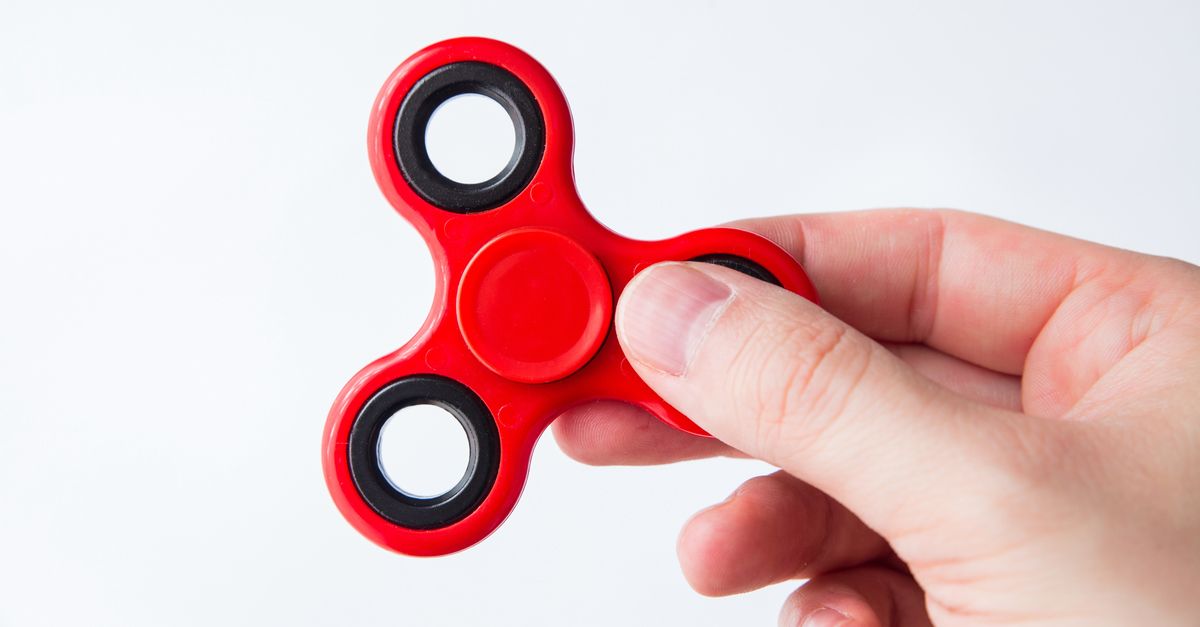An individual conducted tests on a handful of fidget spinners and found that a couple contained supposedly unhealthy amounts of lead.
The referenced tests only included a small amount fidget spinners and did not detect "deadly" levels of lead, and no report on unsafe levels of lead being found in fidget spinners has been issued by the FDA or other regulatory/scientific body.
Several articles concerning the alleged dangers of lead in fidget spinners were published by web sites such as American Freedom Fighters and The Federalist Papers in June 2017 under clickbait, fear-mongering headlines such as "ALERT: Throw Away All 'Fidget Spinners' NOW — Authorities Release New Report Confirming They Can KILL Your Child."
These headlines contained several pieces of misinformation. First, the referenced "new report" did not issue from "authorities" such as the U.S. Consumer Product Safety Commission or the Food and Drug Administration. Rather, it came from a Facebook video and subsequent posts published by Tamara Rubin, a lead-poisoning prevention advocate and documentary filmmaker:
Rubin tested several brands of fidget spinners and claimed that she found unusual amounts of lead in a few of them. Although we have not been able to verify her test results (her study has not been replicated or peer-reviewed), we can say that the results of her study were not in line with the fear-mongering articles published about them. For starters, Rubin did not say that "all" fidget spinners contain high amounts of lead; rather, she told Inhabitat that after testing eleven fidget spinners, she found only two that allegedly contained unsafe levels of lead:
Rubin, an independent lead poisoning prevention advocate, first tested three fidget spinners sent to her by a friend with an XRF instrument. Two were lead-free, but one had very high levels of lead and some mercury. She then disassembled a fidget spinner with LED lights and found both lead and mercury. She found 19,000 parts per million (ppm) of lead and 1,000 ppm of mercury.
These numbers are sobering because scientists consider under 90 ppm of lead to be the safe threshold in children’s toys, according to Rubin. But the paint on the LED light spinner contained 334 ppm of lead and 155 ppm of mercury in one test. The unpainted metal base contained 1,562 ppm of mercury and 2,452 ppm of lead.
Rubin later tested six more fidget spinners and found a $31 [spinner] from Yomaxer that contained 42,800 ppm of lead. She noted ordinary consumers won’t have access to an XRF instrument, which can cost around $50,000. She recommends avoiding fidget spinners available for purchase and instead making your own, such as a fidget spinner out of LEGOs.
In an email about her results, Rubin said she’s very concerned about the high levels of lead discovered in random testing as the toys are so popular. So far she’s tested 11 fidget spinners in total and found two with exceedingly dangerous levels of lead.
Rubin also commented on the fear-mongering headlines published about her tests, saying that they were "increasingly dramatic":
Rubin never claimed that all fidget spinners contain dangerous amounts of lead, nor did she urge parents to throw away these toys for posing a supposedly lethal threat to children. She tested a handful of devices and claimed that she found unusual amounts of lead in two of them.
Although reports about Rubin's study exaggerated the dangers of fidget spinners, some reports do possibly raise legitimate safety concerns about these devices. One issue with fidget spinners is that they are produced by a wide variety of companies in a wide range of locations, some of which may not comply with safety regulations in the United States and other countries where they are vended. The Toy Association published a press release in May 2016 urging parents, among other precautions, to purchase fidget spinners only from reputable retailers:
Shop at a reputable retailer that you know and trust. Those retailers will be selling products that have been tested and comply with strict U.S. safety standards. When a craze like the fidget spinners hits, you may be tempted to buy one for your child wherever you can find one (like at a pop-up vendor on the street or from an unknown online seller), but the safety of products sold outside a reputable retailer cannot be guaranteed.
Customs officials in the Republic of Ireland recently seized nearly 200,000 fidget spinners amidst safety fears:
The Competition and Consumer Protection Commission (CCPC) said it became concerned that some spinners for sale in Ireland may not meet EU product safety standards.
A spokeswoman said consignments were being referred to their safety unit on a daily basis, so it was difficult to give an exact figure.
"We are currently examining samples of those products. If we find that products are incompliant with product safety legislation, the products may be sent back to where they originally came from or destroyed."
Some of those already examined have been declared non-complaint for various reasons, including no visible safety mark, known as the CE marking, or a fake mark.
Although some off-brand (or counterfeit brands) of fidget spinners may contain levels of lead considered to be unsafe, articles claiming that all fidget spinners pose a deadly risk to children are exaggerations based upon a single small unofficial report.


